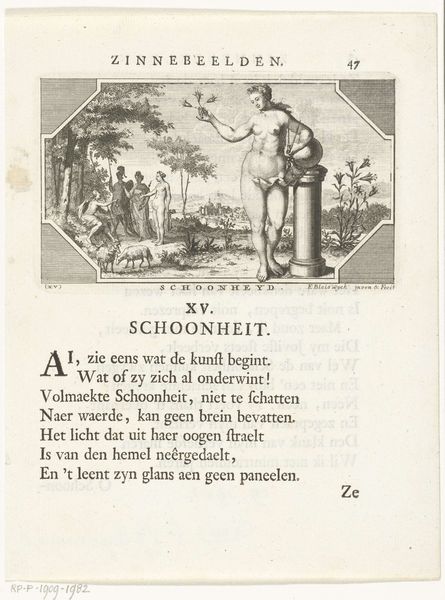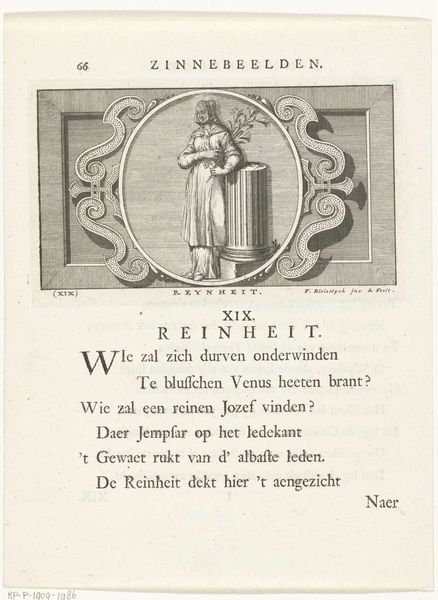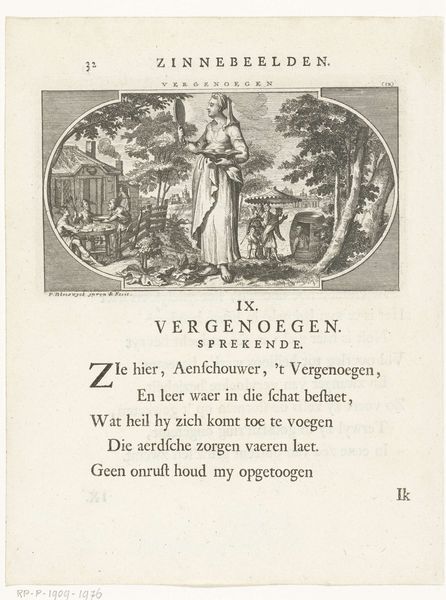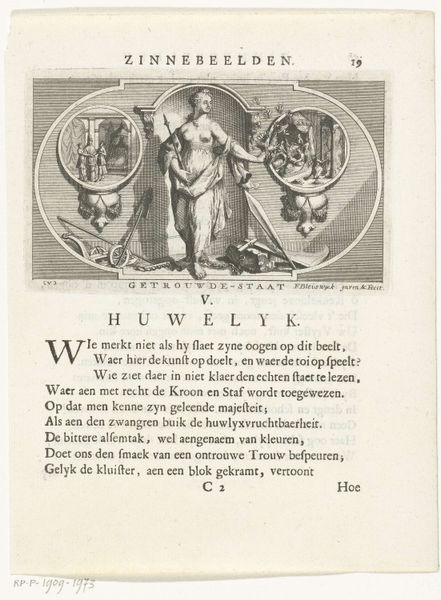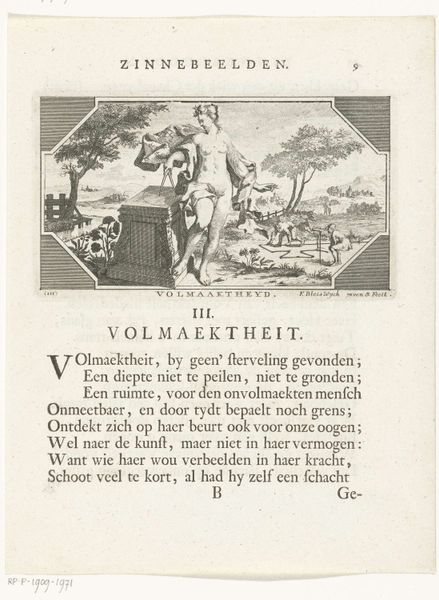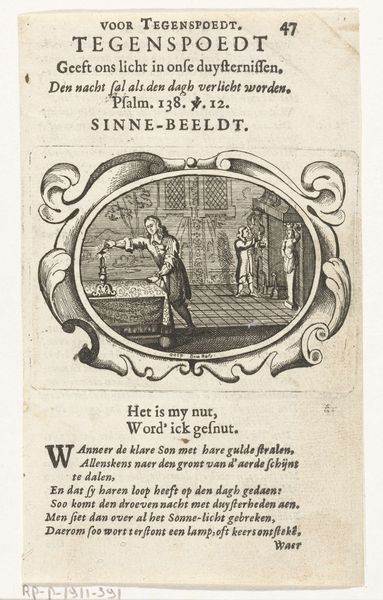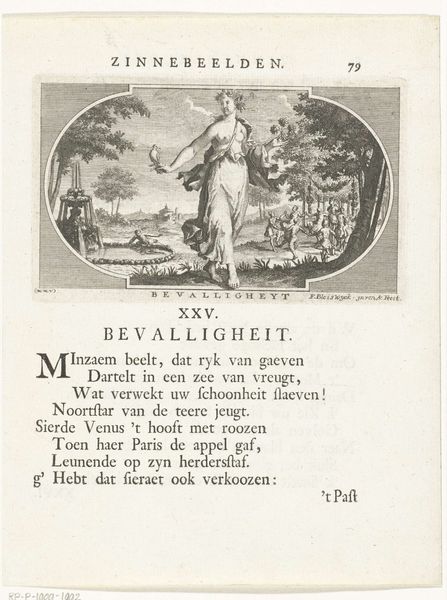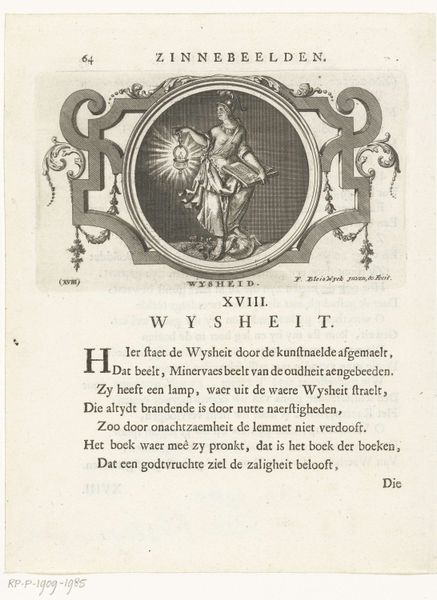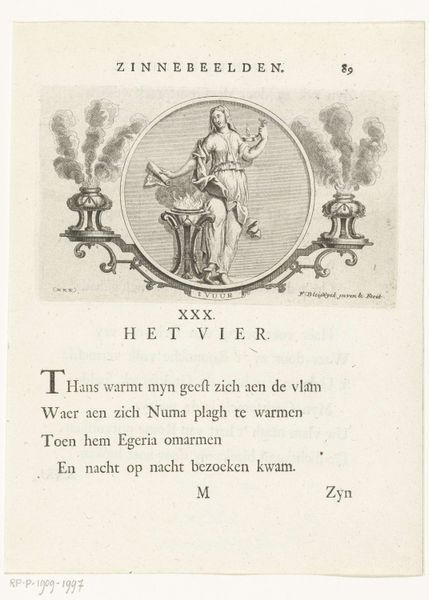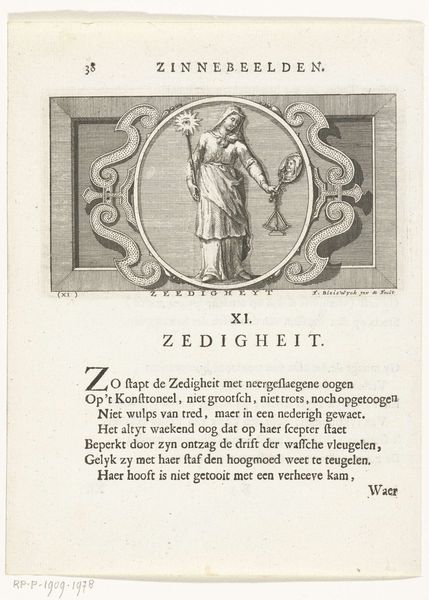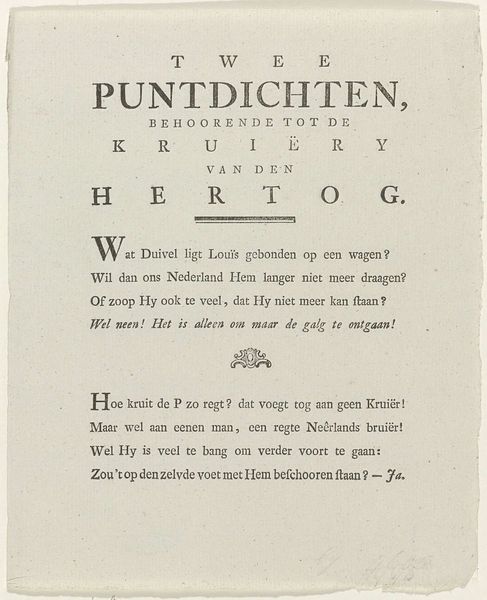
graphic-art, print, engraving
#
graphic-art
#
allegory
#
baroque
# print
#
pen illustration
#
old engraving style
#
figuration
#
ink colored
#
line
#
academic-art
#
engraving
Dimensions: height 196 mm, width 150 mm, height 78 mm, width 130 mm
Copyright: Rijks Museum: Open Domain
Curator: What a striking emblem! This is "Embleem met allegorie op betrouwbaarheid" by François van Bleyswijck, dating roughly from 1681 to 1737. It’s an engraving, currently held at the Rijksmuseum. Editor: It’s austere, yet decorative. All that ornate framing around a surprisingly direct allegorical image – a woman with scales, standing next to a loyal dog. What's the message? Curator: The print clearly uses allegory to address reliability, perhaps trustworthiness in government. Considering the use of engraving as a medium, and its circulation, the print’s access and engagement with the contemporary public would’ve mattered enormously to its meaning. Editor: Yes, engravings allowed for relatively cheap reproductions, broadening the artwork's reach. Did Bleyswijck make use of particularly new or experimental techniques? Was it designed for display in a book or some other printed material? The way this emblem sits on the page also feels noteworthy to me; its production likely involved a workshop dynamic. Curator: Bleyswijck’s expertise was in capturing precise detail. And you’re spot on: emblem books were extremely popular, serving as tools for moral instruction and often integrated with other material, not meant to function on their own. So this was likely integrated with poetry to enforce those moral standards. Editor: I wonder about the material choices mentioned in the poem below: "wrought from metal, carved from ivory, sculpted from marble" These are hardly modest substances; it really undercuts the argument of accessibility. Why list luxurious resources in contrast with accessibility? Curator: Ah, that's a good point. The poem critiques the very court it adorns, arguing, that appearances of virtue mean nothing if faithfulness itself is absent in the ruling class. So the medium facilitates accessibility to spread criticism itself aimed at centers of power. Editor: And to extend on that idea of power; considering the Baroque period and the fashion for detailed engravings, the scale, production values, and political context really affect how we understand this object now. Curator: Exactly, the layers of meaning built into these materials. Well, thinking about all of that, it makes this little emblem more weighty and complex than first imagined. Editor: It does, doesn’t it? Something small can carry quite a heavy message.
Comments
No comments
Be the first to comment and join the conversation on the ultimate creative platform.

